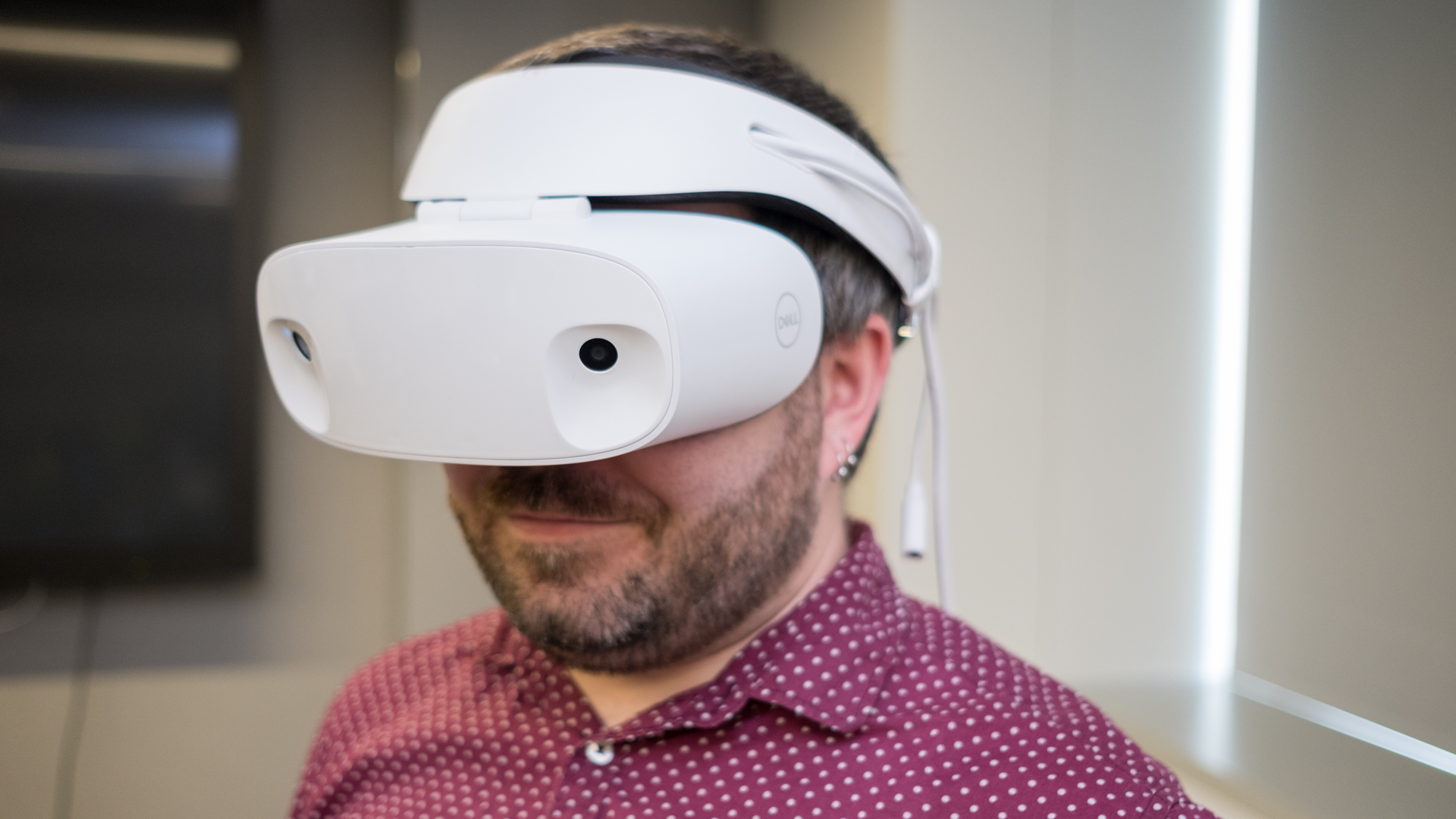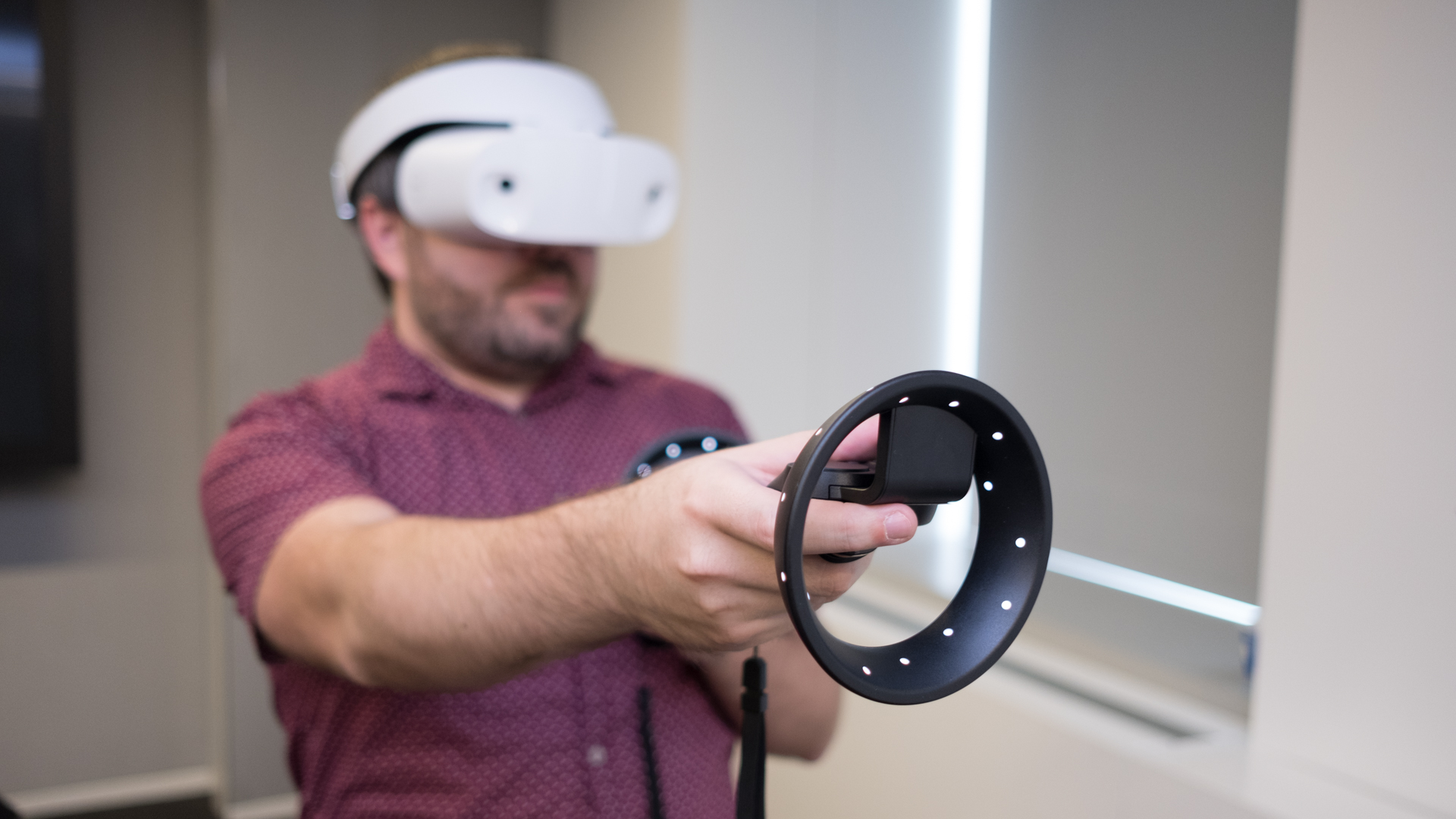Dell Visor is a super comfortable VR headset that should win over the haters
An ergonomic design featuring plenty of padding

Dell has revealed its new Windows 10 mixed reality head-mounted display (HMD) at IFA.
We've gotten a chance to put it on ourselves and its clear the design has been built to provide not just an immersive ‘in-your-face’ VR experience, but a comfortable one, too.
The Dell Visor sports a pair of LCD panels featuring a resolution of 1,440 x 1,440, providing a suitably sharp viewing experience. The flip-up visor also allows users to easily switch between the virtual environment and real world.
Both the visor and headband are well-padded for comfort, and Dell promises there’s plenty of room so even those who wear glasses won’t find that their specs get in the way.

Ergonomically sound
The headband is easily adjustable for any size head, weighted for a more stable feel, and the headset is designed to avoid pressure on the user’s nose and cheeks, so you can wear it for extended periods without feeling like your face is tired.
This is part of Dell's plan for where this headset will fit in the market. Rather than a straight competitor for the HTC Vive and Oculus Rift, the Dell Visor is aiming to be for the 'lifestyle' market.
When we spoke to Joe Olmsted, Dell subsidiary Alienware's Global Gaming Product Director, he said that other headsets already had the market tied up for "fast twitch gaming" and so the Visor would be better suited for "livestreaming, YouTube, watching a thematic movie. It's like IMAX in your living room."
Sign up for breaking news, reviews, opinion, top tech deals, and more.

Allowing space to breathe
An interesting thing about the Dell Visor is that it doesn't try to block out light in the same way that other VR headsets do. Because the weight of the headset is taken by the strap, the flip up visor sits lightly on your face, meaning the bridge of your nose takes less pressure, but there is also more light bleed.
"It allows breathing so your eyes and your face can breathe. The Oculus and HTC are really jammed on to your face," Olmsted continued, "whereas this is something you could sit on your couch for an hour or two, and watch something and not be overwhelmed by the weight and the tech."
And that feels like quite a bit difference, as the Visor doesn't try to separate you from the outside world, and because of that it feels like a more 'casual' VR experience, which is in line with Dell's planned purpose for the headset.

The forward-facing cameras that you can see on the front of the headset aren't for augmented reality functionality (unfortunately), but do mean that the headset has tracking that doesn't require external sensors like the HTC and Rift.
It's easy to make the comparisons to other VR headsets as the Visor is a VR headset, but given that this device is supposed to be for extended usage, and can be used to browse the internet, we wondered whether it was more a competitor for a desktop display.
Olmsted replied: "I still don't see myself writing an email in VR. I don't think it's a replacement, as there are still a lot of things I would want to do without it. But I do think it's a replacement for a 60 inch TV in your bedroom."
Several other convenient touches include cable management clips to keep the device’s cord out of the way, and the visor has an anti-stain coating to help it stay clean.
Expect to see the Dell Visor on shelves come October 17 with a starting price of $349 (around £270, AU$440) for the headset. The HMD will also have companion controllers similar to the Oculus Rift Touch Controller, which will retail at $100 (around £80, AU$125) separately.
Dell will also offer the Visor as a bundle with the controllers for $449 (about £350, AU$570)
This is one of a number of Windows 10 HMDs we first saw back at the start of the year.
- Many of the best laptops will support Mixed Reality
Andrew London is a writer at Velocity Partners. Prior to Velocity Partners, he was a staff writer at Future plc.
